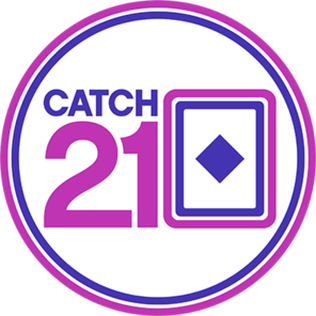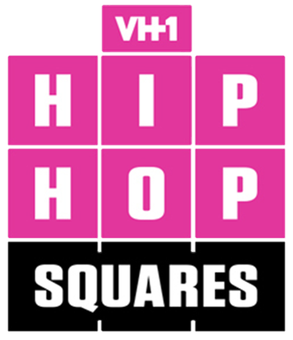Who Wants to Be a Millionaire? is an international television game show franchise of British origin, created by David Briggs, Mike Whitehill and Steven Knight. In its format, currently owned and licensed by Sony Pictures Television, contestants tackle a series of multiple-choice questions to win large cash prizes in a format that twists on many game show genre conventions – only one contestant plays at a time, similar to radio quizzes; contestants are given the question before deciding whether to answer, and have no time limit to answer questions; and the amount offered increases as they tackle questions that become increasingly difficult. The maximum cash prize offered in most versions of the format is an aspirational value in local currency, such as one million pounds in the UK or 75 million rupees in India.

Hollywood Squares is an American game show in which two contestants compete in a game of tic-tac-toe to win cash and prizes. The show piloted on NBC in 1965 and the regular series debuted in 1966 on the same network. The board for the game is a 3 × 3 vertical stack of open-faced cubes, each occupied by a celebrity seated at a desk and facing the contestants. The stars are asked questions by the host and the contestants judge the truth of their answers to gain squares in the right pattern to win the game.

Press Your Luck is an American television game show created by Bill Carruthers and Jan McCormack. Contestants answer trivia questions to earn "spins" on a randomly cycling game board whose spaces display cash, prizes, extra spins, special items, or the show's mascot, a cartoon creature known as the Whammy. Landing on a Whammy eliminates any cash and prizes accumulated while also displaying a short comedic animation. Its format is a revival of an earlier Carruthers production, Second Chance, which was hosted by Jim Peck and aired on ABC in 1977. The original version of Press Your Luck aired on CBS between 1983 and 1986. This version featured Peter Tomarken as host, Rod Roddy as announcer, and Carruthers as both director and voice of the Whammy.

Win Ben Stein's Money is an American television game show created by Al Burton and Donnie Brainard that aired first-run episodes from July 28, 1997 to January 31, 2003, on Comedy Central. The show featured three contestants who competed to answer general knowledge questions in order to win the grand prize of $5,000 from the show's host, Ben Stein. In the second half of each episode, Stein participated as a "common" contestant in order to defend his money from being taken by his competitors. The show won six Daytime Emmy awards, with Stein and Jimmy Kimmel, the show's original co-host, sharing the Outstanding Game Show Host award in 1999. The show was produced by Valleycrest Productions, Ltd. and distributed by Buena Vista Television, both subsidiaries of The Walt Disney Company.
The Joker's Wild is an American television game show that aired at different times between 1972 and 2019. In the show, contestants answer questions based on categories determined randomly by a mechanism resembling a slot machine. The show's title refers to the game's slot-machine mechanism also having jokers.

Split Second is an American game show that was created by Monty Hall and Stefan Hatos and produced by their production company, Stefan Hatos-Monty Hall Productions.

Game Ka Na Ba?, formerly Pilipinas Game Ka Na Ba is a Philippine game show created by ABS-CBN. The main goal of the game is to win 2 million pesos by answering trivia questions.

Weakest Link is an American television game show that made its debut in 2001. It is an adaptation of the British television series of the same name.
Skatoony is a children's live action/animated game show, pitting live-action kids against cartoons. The series was co-produced by Talent TV and FremantleMedia Animation, Blink Studios, and Marblemedia with Smiley Guy Studios. The series used to air on Cartoon Network in the UK until 2017, with new episodes airing every Friday until the series cancellation in 2008. Skatoony has also aired as re-runs in the UK on Boomerang and Cartoon Network Too until the channel itself closed down in 2014. The show aired on Starz Kids & Family in the US until 2019. Reruns were occasionally shown on Teletoon in Canada until August 5, 2017. It also aired on Boomerang in Australia and New Zealand.
Turn It Up! is a musical game show that aired on MTV from June 30 to December 7, 1990. It was the second game show to be produced and broadcast on the network after Remote Control, produced by Albie Hecht, Alan Goodman, and Fred Seibert, of Chauncey Street Productions in New York City.
Game On! is a Canadian sports trivia television game show that was a variation on Jeopardy!. It ran from 1998 to 2000 on Global and was shown on GameTV. The show was hosted by Tim Steeves in season 1 and David Merry in Season 2, with Jennifer Hill as the female co-host. Three male contestants compete in this game. The set was designed to resemble a sports enthusiast's wood-paneled basement recreation room decorated with posters, trophies and other sports memorabilia. The host stood behind a 1970s-style wet bar while the three contestants sat in leather lounge chairs. To answer a question, a contestant pressed a button on a device that resembled a TV remote control.

Catch 21 is an American game show broadcast by Game Show Network (GSN). Created by Merrill Heatter, the series follows three contestants as they play a card game centered on blackjack and trivia. The show is based on a popular online game from GSN's website and aired for four seasons from 2008 to 2011. It was hosted by Alfonso Ribeiro, with actress Mikki Padilla serving as the card dealer.

BrainSurge is an American children's game show that aired on Nickelodeon and was hosted by Jeff Sutphen. The show taped its first season in February 2009, and debuted on September 28, 2009. The show's format was adapted from the Japanese game show Brain Survivor. The U.S. version was created by Scott A. Stone, co-creator of Legends of the Hidden Temple, and Clay Newbill, executive producer of The Mole.

Fifteen to One is a British general knowledge quiz show broadcast on Channel 4. It originally ran from 11 January 1988 to 19 December 2003 and had a reputation for being one of the toughest quizzes on TV. Throughout the show's original run, it was presented and produced by William G. Stewart. Thousands of contestants appeared on the programme, which had very little of the chatting between host and contestants that is often a feature of other television quiz shows.

Hip Hop Squares is an American television game show originally hosted by Peter Rosenberg, which debuted on MTV2 on May 22, 2012. The show is a licensed format of CBS Television Distribution's Hollywood Squares featuring mostly rappers. The MTV2 version of the show was taped in Brooklyn, New York. The VH1 version was taped in Hollywood, California.

Let's Ask America is an American interactive game show which debuted on September 17, 2012. The show features contestants who play from their homes via webcams, answering trivia questions relating to current events. On November 4, 2013, it was announced that Scripps planned to launch Let's Ask America nationwide through a distribution deal with MGM Television. Contestants participate by Skype from the comfort of their own home, an inexpensive technology negating the need for travel expenses. In sweeps months, the show features celebrity editions featuring local news talent from the stations carrying the series such as meteorologists and anchors playing the game from their station's studios for local charities.
L'eredità is an Italian Rai 1 game show currently hosted by Marco Liorni. It premiered on 29 July 2002. From 29 July 2002 to 10 June 2006, it was hosted by Italian presenter Amadeus. He was succeeded by Carlo Conti, who hosted the show until 14 April 2014, when he was replaced by Fabrizio Frizzi. Frizzi hosted until 23 October 2017, when he became ill during the taping of the next show and was taken to the hospital. Carlo Conti substituted for Frizzi from 30 October 2017 to 15 December 2017, and he hosted the special episode in tandem with Fabrizio Frizzi when the latter returned to host the quiz. On 16 December 2017, Fabrizio Frizzi resumed hosting the show by himself until 25 March 2018. The next day, Frizzi died of a brain haemorrhage. Following a hiatus due to Frizzi's death, the game returned from 3 April 2018 until the end of the season with the host Carlo Conti. Flavio Insinna presented the show from 24 September 2018 until 2023.

500 Questions was an American game show broadcast on ABC. The show premiered on Wednesday, May 20, 2015, at 8:00 pm EDT, and ran for seven straight weeknights, with a weekend break. The show features contestants who try to answer 500 questions without getting three questions wrong in a row. The series was renewed for a second season on October 1, 2015.

Ellen's Game of Games, also known as Game of Games and stylized as ellen's GAME OF GAMES, is an American television game show that aired on NBC. In March 2017, NBC ordered six hour-long episodes of the series. Ellen DeGeneres serves as host, while Stephen "tWitch" Boss appears as announcer/sidekick. The series is based on game segments from DeGeneres' daytime talk show, The Ellen DeGeneres Show. The series premiered on December 18, 2017. On February 18, 2020, DeGeneres announced on The Ellen DeGeneres Show that the series was renewed for a fourth season, which began airing on October 6, 2020. In January 2022, the series was canceled after four seasons.
Weakest Link is a television game show which first appeared in the United Kingdom on BBC Two on 14 August 2000 and originally ended on 31 March 2012 when its host Anne Robinson completed her contract. The original British version of the show is still aired around the world on BBC Entertainment and domestically on Challenge. The game begins with a team of eight or nine contestants who take turns answering general knowledge questions within a time limit to create chains of correct answers in a row. At the end of each round, the players vote one contestant, "The Weakest Link", out of the game. Once two players are left, they play in a head-to-head contest, with five questions asked to each contestant in turn, to determine the winner.












